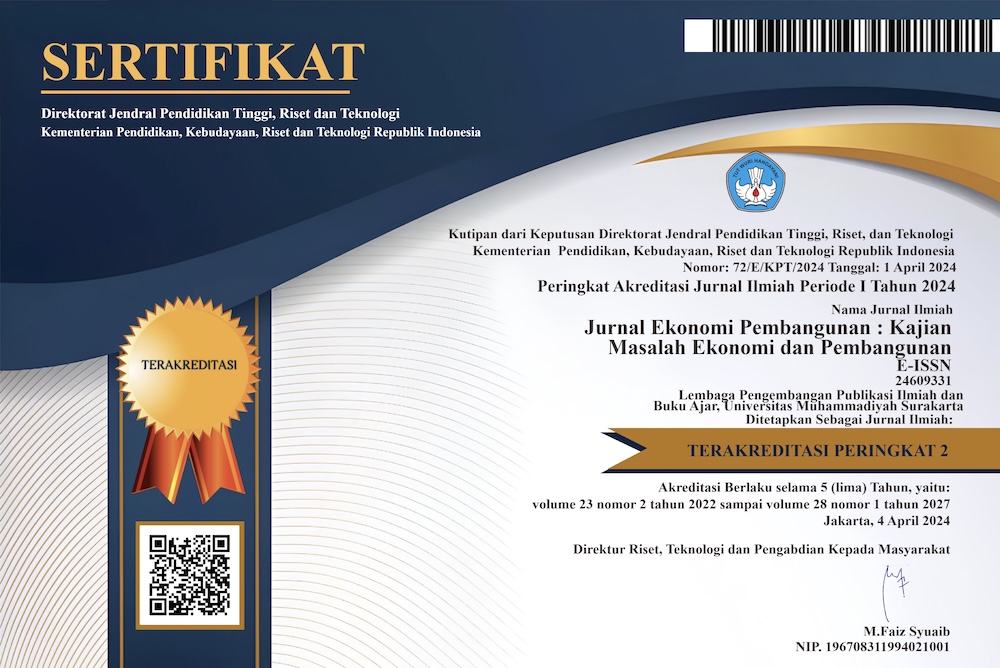Rate of Return on Education in Indonesia: The Privilege of A High Economic Group and Urban Areas
DOI:
https://doi.org/10.23917/jep.v22i1.13006Keywords:
Returns to education, urban, socioeconomic, inequalityAbstract
Investing in education for an individual is one of the best ways to improve their welfare. However, each individual’s returns from education investment vary depending on individual characteristics, household, and regional support. This study aims to analyze the rate of return on education of individuals in Indonesia in general and based on the characteristics of the residence and the individual’s economic level. Using the Mincer equation, the results of the study show that urban types functionally and administratively have a higher average rate of return than functional and administrative rural areas of 2.9% and 1.9%, respectively. Besides, the rate of return to education at the economic level of quantile 5 in urban areas is 2 times higher than quantile 1 in urban areas and quantile 5 in rural areas.















